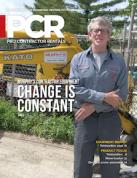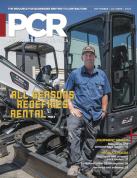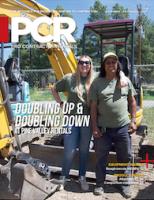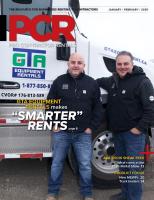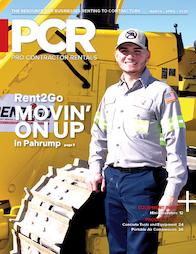Business Management: Make the connection
Combine CRM and telematics and improve your rental operation.
by Ken Gibson
Much like the machines they rent out, professional equipment rental companies have many moving parts. Their inventory, the main asset they make money on, is in a constant state of trading hands and shifting locations.
Further, the physical condition of the equipment they own may change for the worse at any moment, which would depreciate their value and negatively affect the company’s ability to turn a profit.
Combine technologies
There is a way to prevent that scenario from happening and it involves combining customer relationship management your (CRM) platform with telematics technology.
In a CRM, an equipment rental company can store customer information and create useful reports that can help them drive sales and identify problem areas in their selling process.
It is a day-to-day tool for keeping track of appointments and handling lead tradeoffs. It can help managers assign sales territories and monitor the performance of each sales team member.
Add a layer of telematics on top of that and you get an information-gathering solution that rental companies desperately want and need.
Telematics umbrella opens coverage
GPS transponders, remote diagnostics tools and wireless kill switches fall under the telematics technology umbrella. With telematic devices embedded in equipment, professional equipment rental companies can immediately get a q sense of where their inventory is, and as a nice bonus, it opens the door to offer a host of value-added services to their customers.
Because the rental company can watch where their customers take their products, they can have more peace of mind over whether their customers will bring them back.
In the event that a customer breaks the rental agreement, the telematic system can literally put a hold on to the product and the GPS logs can help locate the missing property.
With the diagnostics tools, the rental company can be alerted if the customer starts using the equipment in a way that could damage it. If that happens, the rental center can issue a warning to either bring the product back or to use it correctly.
Job site managers can also benefit from this telematics data. Equipment rental companies that implement telematic systems could offer customers access to the telematics information for an additional fee.
Customers who know where the equipment they have rented is located will help them find employees ‘moonlighting’ with it and enable them to optimize equipment placement and scheduling on their project.
For added safety, a wireless kill-switch can reduce the risk of machine operator error.
Improve customer service
The synergy produced by the combination of a CRM and telematics technology can help improve customer service. A communication device placed on the machine, similar to GM’s OnStar in-vehicle driver assistance service, can give customers the ability to instantly contact them for help. With this in place, customers don’t have to jump through hoops to verify a maintenance question for the specific machine they are using, for instance.
Digital crossover helps logistics
Logistically speaking, this type of digital crossover also benefits by improving distribution. Say a customer places a standing rental order for a specific machine as soon as it becomes available; if another customer finishes with a machine that would fit that order and the two customers are located close to each other, then the equipment rental company would have saved the transportation costs, labor and trouble of having to bring the equipment all the way back to its headquarters.
Telematics provides accurate location data for its equipment, and combined with CRM, that data could be used to streamline the transportation process between customers.
Glean marketing insights
Equipment rental companies can glean marketing insights from telematics technology when it is combined with CRM data.
By looking at where customers use the equipment, they can deduce geographic locations where potential customers might exist, which would be a smart place for billboards and to run digital ads.
Additionally, by comparing a new customer’s information with data from past customers, rental center managers can better predict how much customers will likely use the equipment once they rent it. They can also draw on this information to decide which pieces of equipment they will rent out.
For example, it makes it possible to maximize equipment lifespan by renting the equipment with less wear and tear to the customers who will utilize it the least.
For example, a power equipment rental company may have a CRM system but also have a stand-alone telematics system. By combining both systems, rental center managers metaphorically kill two birds with one stone.
Ken Gibson is a data analyst at Black Ink Technologies, which helps premier manufacturers sell more, faster and smarter. Black Ink combines the best of CRM, business intelligence, geo-mapping, data management, industry-specific data and pre-built library of statistical models in one easy-to-use, and affordable platform to accelerate customer acquisition and customer relationship management. http://blackinktech.com
Copyright 2019 Urbain Communications, LLC. All rights reserved. Contact curbain@urbaincomm.com for permission to reprint or rebroadcast all or part of this article.




